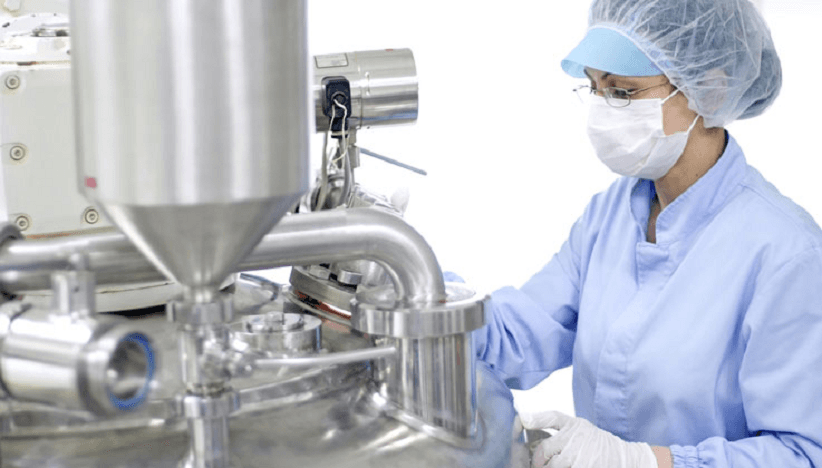Economic pressures demand that operational inefficiencies be addressed and the highly regulated pharmaceutical industry is no exception. In past years, the need to ensure accuracy of measurement and documentation of data superseded any cost/time cutting methods.
Inherent sources of inaccuracy had to be offset as best as possible, despite long, time-consuming methods meant to maintain accuracy and verify results. Thermal validation is a perfect example of this, with pre- and post calibration being de rigueur in mapping projects.
However, as improved technologies emerge, calibration of measurement devices is one area that can be made more efficient. Typical calibration protocols specify pre- and post-calibrations. But, much of the associated expenditures in time and labor in thermal validation can be greatly reduced if the right tool is used.
A more efficient approach to temperature mapping is to look at the temperature range to be mapped and use the most suitable instrument for that range, which allows pre- and post-calibration steps to be entirely eliminated. Thermocouples are the traditional tool for mapping projects, but require pre- and post-cal. Thermistor-based devices are quickly becoming the preferred tool for temperature mapping because—used in moderate-range temperatures—they are a more stable, accurate sensor and do not require pre- and post-calibration. However, pre – and post-cal is not the only problem with using thermocouples. Handling and placing the wires is time-consuming and labor intensive and is the direct cause of some major sources of error.
This article explains how thermocouples function, why they need pre- and post-calibration, and the temperature ranges where they are most effective. Thermistor-based measurement devices will also be addressed, how they work and the ranges where they are a suitable alternative to thermocouples. Supporting data will include accuracy statistics on thermistor-equipped data loggers from one calibration laboratory.
Thermocouples: Basic Function & Use
Thermal validation is one area that has (so far) eluded the cost and time saving advantages of newer measurement technologies. A typical argument for their use has been that cost-saving measures might increase the risk of inaccuracy; especially when the application involves temperature-sensitive product that requires complete documentation.
Thermocouples don’t actually measure temperature, per se; they measure what is called thermoelectric effect. Thermoelectric effect was discovered in 1821 by Thomas Seebeck, who found that when two dissimilar metals were joined a voltage was produced based upon temperature. The relationship between two given metals, temperature and voltage produced is also known as the Seebeck effect. Thermocouples are composed of two high-purity wires welded at one end and are available in a variety of materials. Type T thermocouples—made from Copper and Constantan—are used most often for thermal validation.
A common source of thermocouple error is a separation at the junction. While most validation professionals have dealt with common problems like a break at the junction (J1, Fig.1), there are some lesser known subtleties in thermocouple function that have a large impact on their accuracy and usability in certain applications.
A less obvious and irreparable source of error is imperfection along the length of the wire. The entire length of a thermocouple is a sensor — rather than simply the junction. This is because the voltage created by a difference in temperature is not only generated where the metals are welded, but over the entire length of thermocouple. These imperfections in the thermocouple wire, created at time of manufacture or during handling, actually cause “micro-thermocouples” to be formed along the length of the wire.
For many applications (warehouses, large chambers) long thermocouple lengths must be placed. The longer the length of the wire, the more opportunity for its degradation and the greater the error attributed to “micro-thermocouples” which decrease the accuracy. Each micro-thermocouple created along the entire length produces a slightly different voltage per °C and thus, increases measurement errors.
Sensor Drift
Thermocouples typically produce a small output signal; 40uV (microvolts) per °C of temperature difference3 and that small output requires a high amount of signal amplification (gain) in the measuring system, which introduces sensor drift. In addition, these small signals are susceptible to external noise, a particular problem with long wires. Here again: the longer the wire, the greater the potential noise pickup, the increased error in measurement.
Error at the junction
Every junction of dissimilar metals produces a Seebeck-voltage when a temperature difference is present. For example, a copper to copper junction that has formed an oxide will produce a voltage 10 times greater (>500uV per °C) than the intended (thermocouple) junction (See Figure 2). This accounts for one of the largest sources of error in thermocouples, swamping the measurement of the intended junction.
Another source of error comes from the secondary cold junction temperature measurement system, which is a necessity with thermocouples. Thermocouples do not respond to an absolute temperature, but as stated earlier, to the difference in temperature across the length; no difference will result in no output voltage.4 As a result, each thermocouple measuring system must have this secondary measurement system, with its own inherent sources of error.
So, why use thermocouples at all? The fact is that in extreme temperatures they are the only economical alternative robust enough to function. While thermocouples remain the best sensor for validating extreme temperatures in industrial applications, with so much potential for error, their use is not justified in mid-range temperatures.
Thermistors: An Alternative for Mid-range Temperatures
At extreme temperatures, thermocouples are a necessary tool for validation, but from -90°C to 130°C, thermistors are far more accurate and stable. And, with the various sources of error in thermistor-based measurement accounted for and dealt with, they are by far the most accurate mapping tool. The stability of thermistors allows for fast deployment and eliminates the need for pre- and post-calibrations.
As thermocouples measure voltage, thermistors measure by changing their electrical resistance. In a thermistor-based system, a signal of 35 mV (millivolts) per °C is typical; nearly 1000 times greater than a thermocouple-based system. The large signal results in a far more stable measuring system. Also, the high resistivity of the thermistor allows a measurement lead resistance that produces a typical error of 0.05° C.5
Unlike thermocouples, thermistors have no other dependencies. They produce an output which is proportional to the absolute temperature, as opposed to measuring change over the entire length of the sensor. When placed inside a small data recorder, they are ideal for standalone operations like thermal mapping—especially in large, high traffic or hard to reach areas.
Thermistors in small data loggers can combine memory, a battery, a clock, and a microprocessor. Although designed for more limited temperature ranges than thermocouples, they offer greater measurement accuracy, faster setup, long-term in-calibration performance and data redundancy. Data recorders can provide temperature accuracies to 0.1°C and tamperproof operation that comply with 21 CFR Part 11, a necessity in FDA regulated environments.
Calibration Statistics: Thermistor Accuracy one year later
Over a year, a manufacturer of thermistor-equipped data recorders reported that of the 2,427 loggers returned for routine service calibrations, 99.7% of the devices were still within their specifications after 10 to 14 months of field use. Of the failed calibrations (0.3%), none were out-of-specification by more than 0.12ºC; the average out-of-specification value being 0.036ºC.6 This performance is well within acceptable limits for most applications.
The idea of not performing pre- and post-calibrations may be unthinkable to many validation professionals who follow protocols that require these steps and must document that data. Of course, there is a cost to changing SOPs which must be considered. However, the extra work using thermocouples is present with every mapping job, the change-over process for a procedure need only be completed once. Additionally, time lost from failed calibrations drives up cost and interrupts the thermocouple mapping process.
One flaw in the argument for the necessity of pre- and post-calibrations is revealed when we consider that the temperature reference sensors used to field-calibrate thermocouple systems are typically calibrated once a year, just like thermistor-based recorders.
Conclusion
Along with numerous guides that can help determine the best mapping tools for your environment, a helpful source of information is the manufacturer of your thermal validation equipment. Each device used in validation should include accuracy specifications with associated temperature range(s), statistical data, recommended calibration intervals, product test specifications and performance.
Evaluating product specifications on your validation equipment will mitigate doubts over new equipment and protocols. Moreover, they overwhelmingly justify the effort of changing over from out-dated validation methods. Using data recorders equipped with thermistors for temperature mapping offers the advantages of higher accuracy in temperatures from -90°C to 85°C, simple setup and operation, faster test completion, improved quality of data and reduction of site disruptions. The autonomy of data recorders—with on-board battery, sensor, and redundant recording—make them the ideal tool for both large- and small-scale thermal validation projects.
References
- GAMP® Good Practice Guide: Calibration Management ISPE (2001)
- Kerlin, T.W. (1999). Practical Thermocouple Thermometry USA: Instrument Society of America
- Temperature Measurement Thermocouples ISA-MC96.1 Instrument Society of America (ISA): (1982)
- Manual on the use of Thermocouples in Temperature Measurement—4th Edition, (1993) ASTM Committee E20 on Temperature Measurement.
- Veriteq Instruments’ temperature accuracy specifications for thermistor-based data recorders are 0.15° C between the range of 20 to 30°C and 0.25°C between the range of -20 to 70°C.
- One-year statistics from the calibration database of Veriteq Instruments showed that 99.7% of 2,427 data recorders, having been used in a variety of environments over a period of 10 to 14 months, were still within published accuracy specifications to 0.15°C.






